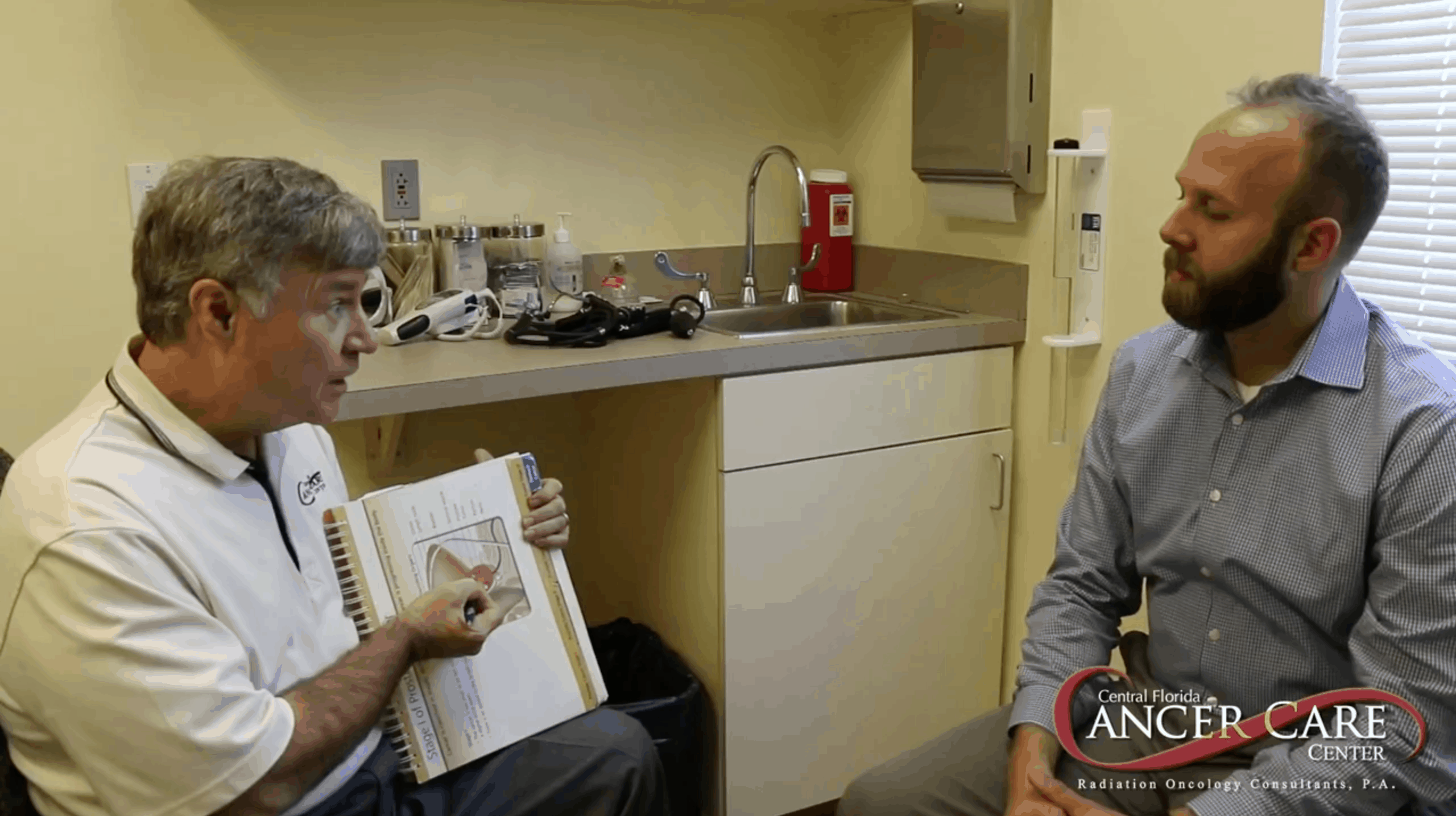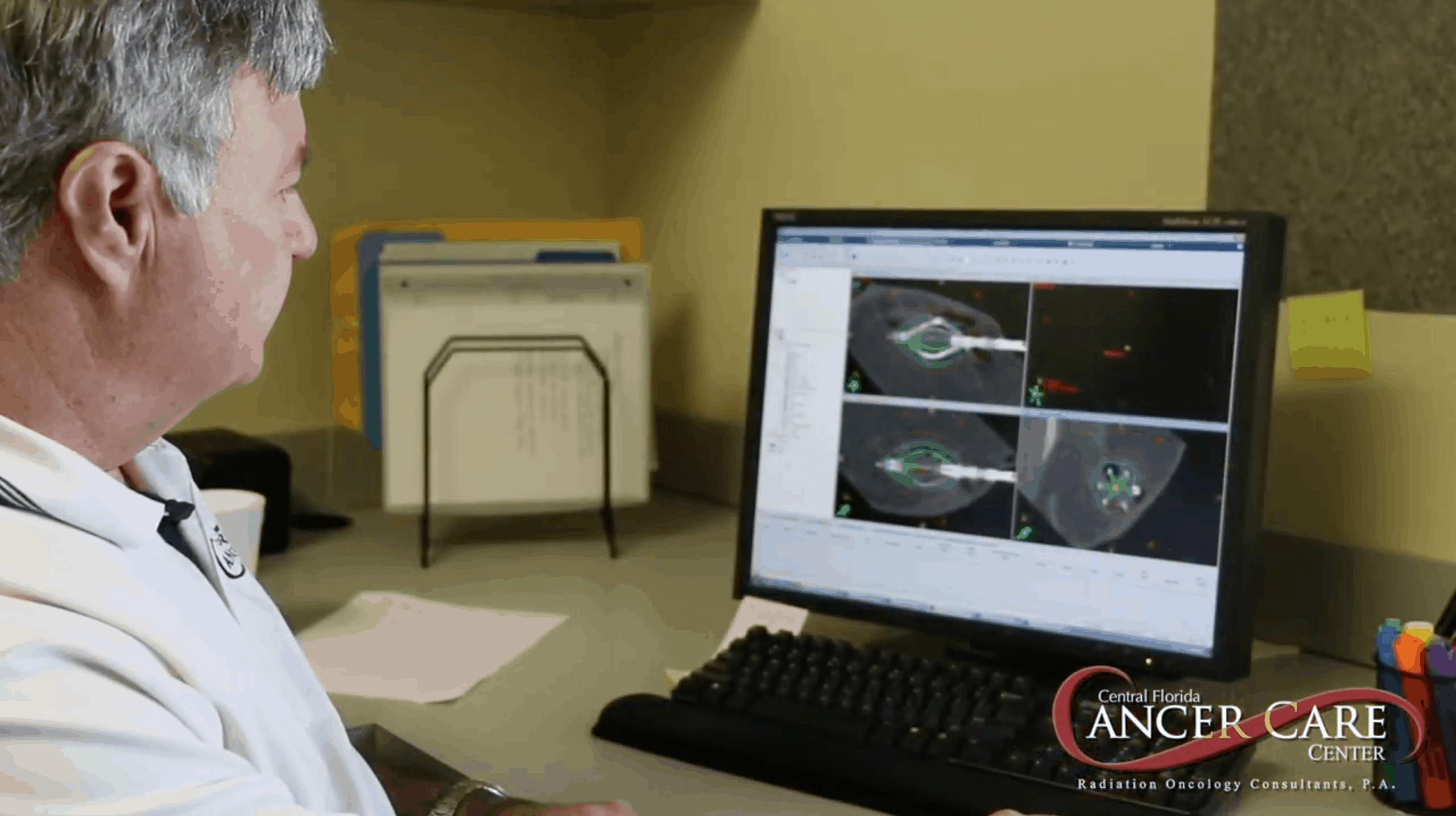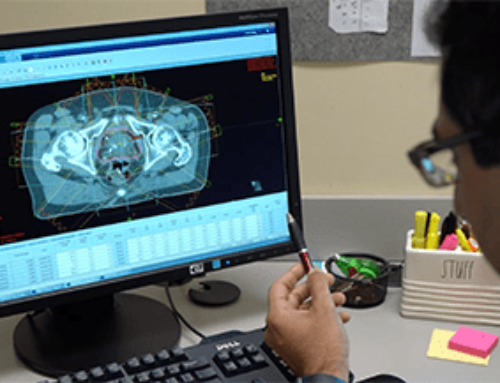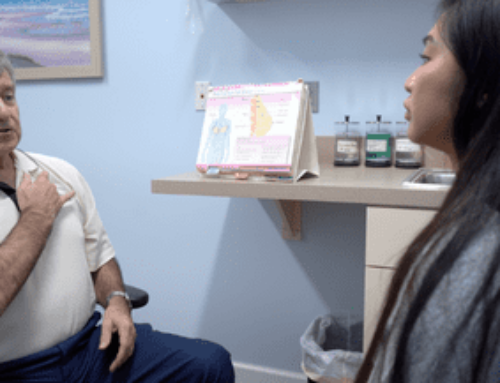- What is IMRT?
- What is IGRT?
- Why do you need IMRT and IGRT when treating prostate cancer
- What are the benefits of treatment with IMRT and IGRT for prostate cancer?
- What does the patient experience when undergoing IMRT and IGRT?
When prostate cancer strikes, it’s important that your doctor selects the most effective treatment options to restore your health. If you and your clinical team decide that radiation therapy is the best course of treatment, today’s innovative radiation treatments are precision guided to treat only the cancer and not the surrounding tissue. That’s one of the reasons why using IMRT and IGRT to treat prostate cancer is so effective.
What is IMRT?
Intensity-modulated radiation therapy (IMRT) is a type of external beam radiation therapy (EBRT) used to treat prostate cancer patients. IMRT is an advanced type of therapy that manipulates beams of radiation to conform to the tumor’s shape with the goal of reducing the exposure of the healthy tissues surrounding the cancer.
What is IGRT?
Image-guided radiation therapy (IGRT) is used frequently with IMRT. IGRT uses imaging tools such as an MRI (magnetic resonance imaging), CT or CAT scan (computed tomography), or PET scan (positron emission tomography) to safely and accurately deliver radiation treatment to the cancerous tumor with as little normal tissue being treated as clinically appropriate.
Why Do You Need IMRT and IGRT When Treating Prostate Cancer?
 To understand the benefits of IMRT and IGRT for prostate cancer treatment, we must first understand how radiation therapy works. Radiation is a highly effective treatment that kills cancer cells by damaging their genetic structure to prevent the tissue from growing. The problem, however, is that the radiation can also damage surrounding healthy tissue.
To understand the benefits of IMRT and IGRT for prostate cancer treatment, we must first understand how radiation therapy works. Radiation is a highly effective treatment that kills cancer cells by damaging their genetic structure to prevent the tissue from growing. The problem, however, is that the radiation can also damage surrounding healthy tissue.
Steven G. Lester, M.D., F.A.C.R.O., board-certified radiation oncologist at Central Florida Cancer Care, describes how this affected prostate cancer treatments, “In the past, before the technology improved, we had to take about a two-centimeter (roughly one inch) margin around the prostate to make sure we didn’t miss it.”
The problem is that it’s common for the prostate to shift. This happens throughout the day, in part, because your rectum is located behind the prostate. If the rectum is distended with gas or stool, it will push the prostate in one direction. If the rectum is empty, the prostate will drop in a different direction.
The prostate also moves depending upon how full your bladder is. Doctors generally tried to tread patients when their bladders were full, but there are variables related to how much fluid is in the bladder, which could cause the prostate to shift.
Finally, radiation oncologists use skin tattoos on the patient’s belly to direct the radiation treatment. The problem with these markers is that bellies wiggle. Dr. Lester commented, “You have to start with landmarks, which are on the belly, and bellies wiggle. The larger the patient, the more likely you’re not going to have your aim on because you’re using skin tattoos that are wiggling around.”
These variables made radiation oncologists strive for more innovative and accurate techniques to protect the surrounding tissue while fully treating the prostate cancer. They found innovation in IMRT and IGRT.
What Are The Benefits of Treatment with IMRT and IGRT for Prostate Cancer?
One of the greatest achievements to date in treating prostate cancer is the use of sophisticated IMRT and IGRT techniques designed to target the specific instance of cancer in the organ without affecting the healthy tissue surrounding the prostate.
“Once we developed image-guided radiation, it allowed us to visualize the prostate every day. Since then, we have been able to cut those margins from two centimeters to point five centimeters,” says Dr. Lester. “That lets us treat a lot less healthy tissue, helps us ensure we’re hitting the target, and it has allowed us to put in a higher dose of radiation, which has resulted in longer, better term, local control, which hopefully will translate to cures.”
In the past before the technology improved, the chances of irradiating surrounding healthy tissue was high. This could result in additional health problems for the patient, something no doctor wants to occur. Thankfully, the development of new IMRT and IGRT tools allows radiation oncologists the ability to coordinate the life-saving radiation beam to within millimeters of its target. By localizing radiation treatment collateral damage to other organs is minimal.
One study compared traditional treatment with IMRT and IGRT, describing the problem with general prostate radiation therapy in this way:
“Traditional radiation treatments strategically treat volumes greater than the clinical target tissue to the prescription does in order to achieve a high probability of treatment success in spite of daily tumor position uncertainty.”
The difference today is that IMRT and IGRT can monitor where the prostate is located, even though the organ is prone to movement. In addition to precision alignment of the radiation beam, the amount of therapeutic radiation dosage can also shift throughout the therapy, for a very targeted, personalized treatment. Dr. Lester stated, “The whole process is designed to sculpt the dose of radiation to paint it just to the prostate and to treat less bladder, less rectum, less hip and give you a better cure rate with fewer side effects.”
What Does the Patient Experience When Undergoing IMRT and IGRT?
 Dr. Lester stated, “There is a lot of technology involved with prostate radiation, and it takes a while to get started. It’s important you work with your doctor and his entire team to make sure your treatment is done properly.”
Dr. Lester stated, “There is a lot of technology involved with prostate radiation, and it takes a while to get started. It’s important you work with your doctor and his entire team to make sure your treatment is done properly.”
IMRT and IGRT require a clinical treatment team that could include a radiation oncologist, therapeutic medical physicists, dosimetrist, radiation therapists, medical assistants, and nurses. Your radiation oncologist will determine the dosage of radiation to achieve the best result. The physicist and dosimetrist will then make daily treatment calculations that will be delivered by the radiation therapist. The medical assistants and nurses will help manage any adverse side effects or reactions to treatment. This team will work simultaneously to achieve your treatment goals and return you to health.
At the beginning of each radiation session, the patient will be positioned on a treatment table. Images will be taken to confirm the treatment region and physical markers may be used to direct the IMRT. During the radiation treatment the patient sees and hears the machinery moving. Side effects from the treatment vary, depending on the radiation dosage you received.
IMRT and IGRT treatment reduces these side effects and improves the cure rate for prostate cancer. Talk with Dr. Lester and the team at Central Florida Cancer Care to discuss your options today.





